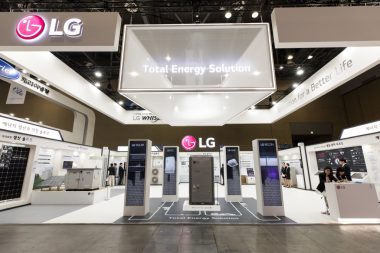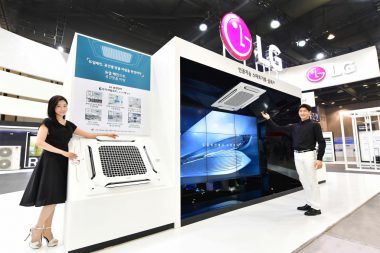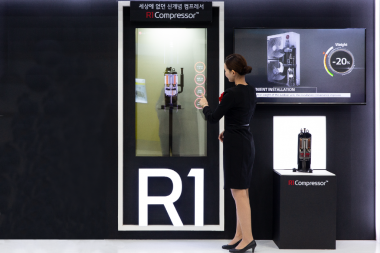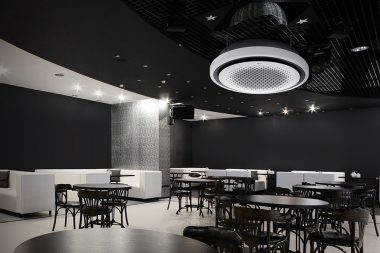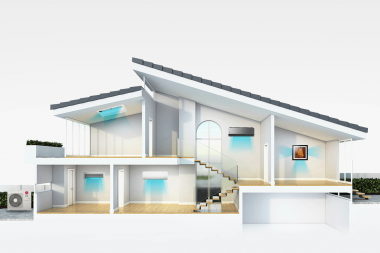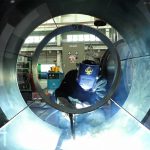HVAC solutions are complex systems that play an integral part in many parts of our lives. Electric air conditioners have been keeping us comfortable and managing climate in places including our homes, offices, school and factories for over 100 years. As our needs have evolved, so have the innovative components and technology that makes these complex systems work. Yet there is an important component of HVAC systems that often gets lost in the conversation about climate control development. This component is the thermostat. The thermostat is our interface to controlling and monitoring the temperature wherever we are, and thermostat technology has come a long way over the years.
It All Began with Temperature
Thermostat technology all begins with controlling the temperature. As far back as 1620, an inventor named Cornelius Drebbel created what is considered the origin of the thermostat that regulated temperature for the incubation of eggs using mercury. The first thermostat patent was registered by Andrew Ure in 1830 to regulate temperatures in the manufacturing of textiles. However, it wasn’t until over 50 years later when a teacher and inventor by the name of Warren Johnson the first electric thermostat to maintain comfortable temperatures in his classroom. While this instrument was still rudimentary, it was the first of its kind to be used for controlling the temperature inside buildings and the true beginnings of the thermostat as we know it today. A few years later, Albert Buts patented a thermostat with an automatic pulley system that regulated temperature by opening and closing the furnace door.
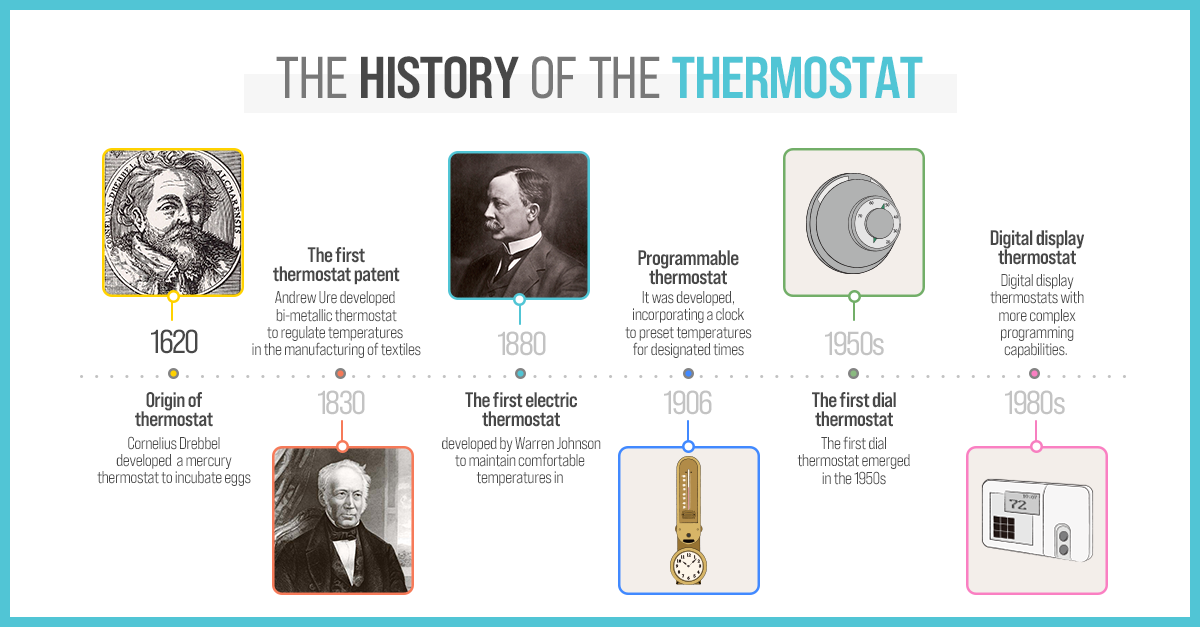 A timeline of thermostat development
A timeline of thermostat development
In 1906, a programmable thermostat of sorts was C a clock that allowed users to preset temperatures for designated times. Electric clocks were then integrated into thermostat applications in 1934, and the first dial thermostats emerged in the 1950s. It wasn’t until the 1980s that we saw digital display thermostats with more complex programming capabilities. As circuit and display technology advanced we continued to see more advanced thermostat technologies and that leads us to where we are today. But how much do you know about the extensive capabilities of modern thermostats?
 The modern thermostat has come a long way since models with clocks and dials
The modern thermostat has come a long way since models with clocks and dials
The Next Generation
Modern day thermostats are unrecognizable from the thermostats developed over 100 hundred years ago. Thermostat technology has evolved from merely controlling temperature to provide comprehensive climate control across diverse spaces, monitoring of all operations in an HVAC system, and managing energy consumption. Users can monitor environmental information including temperature, humidity and air quality, while also configuring integrated scheduling for weekly, monthly or yearly plans. Centralized building control is also possible with integration with 3rd party applications such as lighting and ventilation. The thermostats of today are truly revolutionizing our lives and how we interact with our surroundings.
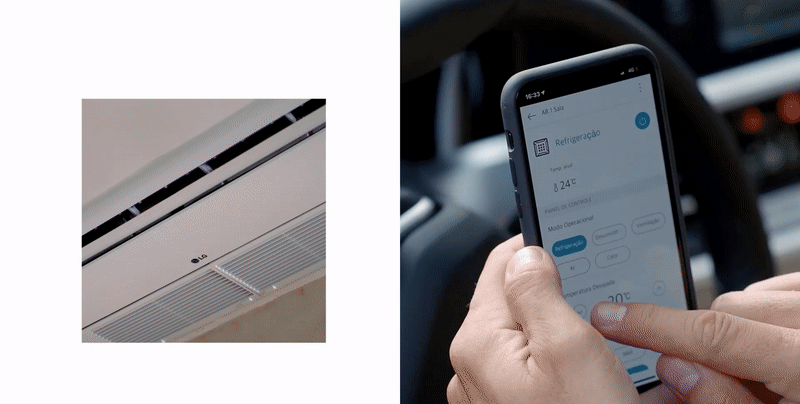 Thermostat functionality has even expanded into remote mobile applications
Thermostat functionality has even expanded into remote mobile applications
The last 100 years have seen thermostat technology evolve from solving simple problems to providing solutions for some of the most integral parts of our lives. With the rapid advancement in HVAC and thermostat technology that have taken place in recent years, the near future is sure to bring even more exciting changes to the market as well as our homes and businesses.




